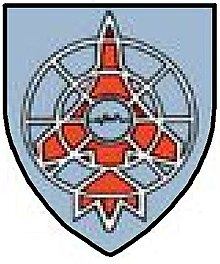
The Royal Regiment of Australian Artillery, normally referred to as the Royal Australian Artillery (RAA), is a Regiment of the Australian Army descended from the original colonial artillery units prior to Australia's federation. Australia's first guns were landed from HMS Sirius and a small earthen redoubt built, near the present-day Macquarie Place, to command the approaches to Sydney Cove. The deployment of these guns represents the origins of artillery in Australia. These and subsequent defences, as well as field guns, were operated by marines and the soldiers of infantry regiments stationed in Australia. Unlike their British and Canadian equivalents, there are no regiments of horse artillery in the order of battle of the Royal Australian Artillery. The First World War saw the raising of 60 field, 20 howitzer, and two siege batteries along with the heavy and medium trench mortar batteries. Until 19 September 1962 the Australian Artillery was referred to as the 'Royal Australian Artillery', however, on this date Queen Elizabeth II granted the RAA the title of 'The Royal Regiment of Australian Artillery'. The Regiment today consists of Regular and Reserve units.

The Royal School of Artillery (RSA) is the principal training establishment for artillery warfare in the British Army. Established in 1915, it is located at Larkhill, Wiltshire, on the south edge of Salisbury Plain in the United Kingdom. The School is the primary training facility for Royal Artillery recruits, and is also home to the Gunnery Training Team.

The South African Army Artillery Formation is the controlling entity of all South African Army artillery units. It draws much of its history from the South African Artillery, established in 1934 but with roots that reach back to 1921. The formation consists of both regular and reserve units. There is a separate South African Army Air Defence Artillery Formation that directs army anti-aircraft warfare units.
Canadian Forces Base Picton was a military installation located in Picton, Ontario. The base was active from the Second World War to 1969 and served the Royal Air Force, Royal Canadian Air Force and Canadian Army. Today, the site functions as the Picton Airport.

The Regiment of Artillery is a combat/fighting arm of the Indian Army, which provides massive firepower during all ground operations of the Indian Army. It is a successor to the Royal Indian Artillery (RIA) of British Indian Army, which itself traces its origins to the formation of Bombay Artillery in 1827.

The School of Artillery is the South African Army's specialized artillery training school
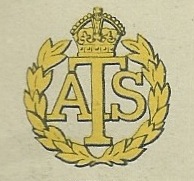
93rd Searchlight Regiment, Royal Artillery was an all-female British air defence unit during World War II, formed in October 1942 and disbanded in July 1945.

The South African Army Training Formation is the controlling entity of all South African Army training units. The Formation was established in April 1999 and mandated to provide, maintain and sustain landward common training to the SA Army.

The 79th Heavy Anti-Aircraft Regiment, Royal Artillery was an air defence unit of Britain's Territorial Army (TA). Formed just before World War II, it fought in the Battle of France, the Swansea Blitz, Operation Torch and the Italian Campaign. It continued serving in the post-war TA until 1955.

The South African Army Air Defence Artillery Formation is the controlling entity of all South African Army Air Defence Artillery units. This Formation consists of both regular and reserve units.
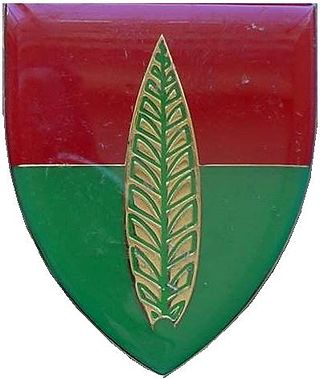
10 Anti-Aircraft Regiment is an anti-aircraft artillery regiment of the South African Army.
The Essex (Fortress) Royal Engineers was a volunteer unit of Britain's Royal Engineers formed to defend the Essex coast. It served in this role in World War I and then converted to a searchlight regiment for air defence in World War II. The unit ended the war as a garrison infantry battalion. Its descendants continued to serve in the Territorial Army until 1955.
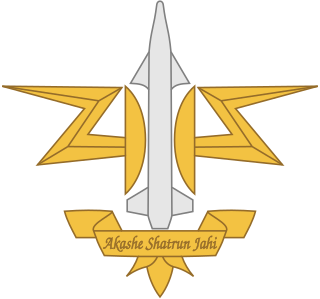
The Corps of Army Air Defence, is an active corps of the Indian Army and a major combat support arm tasked with air defence of the country from foreign threats. The AAD is responsible for the protection of Indian air space from enemy aircraft and missiles, especially below 5,000 feet.

The 5th Anti-Aircraft Division was an air defence formation of Britain's Territorial Army, created in the period of tension before the outbreak of the Second World War. It defended Southern England during the Battle of Britain and the Blitz.

The 120th Light Anti-Aircraft Regiment, was an air defence unit of the British Army's Royal Artillery during World War II. It landed on D-Day and saw action throughout the campaign in North West Europe, defending the vital Scheldt Estuary until the end of the war.
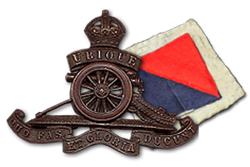
91st Heavy Anti-Aircraft Regiment, Royal Artillery was a part-time unit of Britain's Territorial Army (TA) formed in the West Riding of Yorkshire just before the outbreak of World War II. Its service during the war included Home Defence during the Battle of Britain and The Blitz, and a length period in Middle East Forces. Postwar it continued to serve in the TA in the air defence role until 1955.

The 99th Heavy Anti-Aircraft Regiment, Royal Artillery was an air defence unit of Britain's Territorial Army (TA) during World War II. It defended London during the early part of the war, and later served in the campaign in North West Europe.

143rd Heavy Anti-Aircraft Regiment was an air defence unit of Britain's Royal Artillery formed during World War II. It started out as a 'Mixed' regiment with around two-thirds of its personnel being women from the Auxiliary Territorial Service (ATS). The regiment defended the West of England from 1942 to the end of the war when it moved to South East England. The regiment continued in the postwar British Army.

98th Heavy Anti-Aircraft Regiment, Royal Artillery, was an air defence unit of Britain's Territorial Army (TA) formed in Gloucestershire during the period of international tension leading up to the outbreak of World War II. It defended aircraft factories during the Battle of Britain, then the city of Manchester during the Blitz. It later served in the campaign in North West Europe. The regiment continued in the postwar TA until amalgamated in 1955.

Heavy Anti-Aircraft Gun Station 385 is a heritage-listed former anti-aircraft defence and gun emplacement at 50 Pritchard Street, Lytton, City of Brisbane, Queensland, Australia. It was built from 1943 by the Allied Works Council. It is also known as Lytton Heavy Anti-Aircraft battery emplacement and Gun Station 385. It was added to the Queensland Heritage Register on 28 June 2019.
